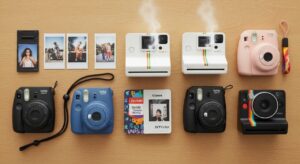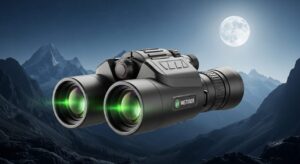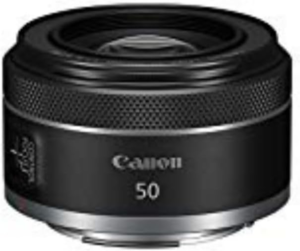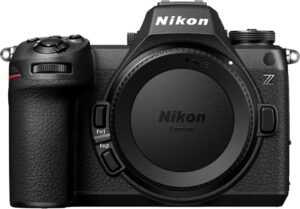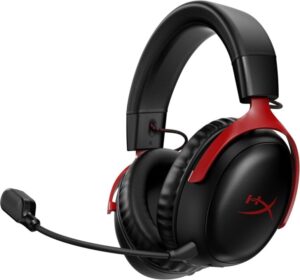Best ILC Camera for Every Photographer
In the dynamic world of photography, an interchangeable lens camera (ILC) is often the gateway to unlocking true creative potential. Moving beyond the limitations of smartphones and compact cameras, ILCs offer unparalleled flexibility, superior image quality, and the ability to adapt to virtually any photographic scenario. This comprehensive guide will help you navigate the vast landscape of options to find the best ILC camera for your needs, whether you’re a budding enthusiast or a seasoned professional.
With the rapid evolution of technology, especially in the mirrorless segment, choosing the top mirrorless camera can be daunting. We’ll delve into key features, compare leading models, and provide expert mirrorless camera recommendations to ensure you make an informed decision.
Understanding ILC Cameras: Why They Matter
An ILC, or interchangeable lens camera, is precisely what its name implies: a camera body designed to accept a variety of lenses. This fundamental feature is what sets them apart and provides photographers with immense creative control. Unlike traditional point-and-shoot cameras, ILCs allow you to swap lenses to suit different photographic styles – from wide-angle landscapes to telephoto wildlife shots, or fast prime lenses for stunning portraits with beautiful background blur.
The market has largely shifted from mirrorless vs DSLR, with mirrorless cameras now dominating due to their compact size, advanced electronic viewfinders, and sophisticated autofocus systems. These cameras, often referred to as best interchangeable lens camera options, leverage cutting-edge technology to deliver exceptional performance in both stills and video.
The Advantages of an ILC:
- Superior Image Quality: Larger camera sensor size (APS-C or full-frame) captures more light and detail.
- Creative Control: Access to a vast array of specialized lenses for different effects.
- Better Low Light Performance: Larger sensors and fast lenses excel in challenging lighting conditions.
- Advanced Features: Faster autofocus, higher burst rates, and professional video capabilities.
- Future-Proofing: Invest in a system that can grow with your skills and needs.
Key Factors When Choosing Your Best ILC Camera
Selecting the best ILC camera involves considering several crucial specifications and features. Understanding these will help you align your choice with your photographic goals and budget.
1. Sensor Size: Full-Frame vs. APS-C
The sensor is the heart of your camera. Full frame mirrorless cameras offer the largest sensors, delivering superior low-light performance, shallower depth of field, and often higher resolution. However, they come with a higher camera price range and larger, heavier lenses. APS-C mirrorless cameras, while smaller, provide an excellent balance of quality, size, and affordability, making them ideal for many enthusiasts and even professionals.
2. Autofocus System
A fast and accurate autofocus system is paramount, especially for capturing moving subjects or for precise focusing in challenging conditions. Look for cameras with advanced subject tracking, eye AF, and a high number of autofocus points. This is particularly important for sports, wildlife, or portrait photography.
3. Video Capabilities
If you’re a content creator or aspiring videographer, the camera’s video features are critical. Many modern ILCs offer uncropped 4K video, 6K, or even 8K recording, along with high frame rates for slow-motion effects. Features like 10-bit internal recording and log profiles are essential for professional video work, making them a strong contender for the best camera for video.
4. Image Stabilization
Camera image stabilization, particularly in-body image stabilization (IBIS), helps to reduce camera shake, allowing for sharper handheld photos and smoother video, especially in low light camera performance scenarios. Some lenses also offer optical image stabilization, which can work in conjunction with IBIS for even greater stability.
5. Lens Ecosystem and Compatibility
A camera body is only as good as the lenses available for it. Research the native lens mounts (e.g., Canon RF, Sony E, Nikon Z, Fujifilm X) and the range of lenses offered by the manufacturer and third-party companies. Consider camera lens compatibility with older lenses via adapters if you already own some.
Top ILC Camera Recommendations
Based on extensive ILC camera reviews and market analysis, here are our top picks across various categories, designed to meet the needs of different photographers.
Best Entry-Level ILC Cameras for Aspiring Creators
For those just starting their journey into interchangeable lens photography or content creation, these cameras offer an excellent balance of user-friendliness, quality, and value. They are great choices for an interchangeable lens camera beginner.
1. Canon EOS R50 RF-S18-45mm F4.5-6.3 IS STM Lens Kit, Black
Capture stunning photos and 4K videos with this compact and user-friendly mirrorless camera, perfect for aspiring creators and everyday photography.

Key Features:
- 24.2MP APS-C CMOS Sensor for high-resolution images.
- Uncropped 4K 30p video for cinematic quality.
- Dual Pixel CMOS AF II with advanced subject tracking.
- High-speed continuous shooting up to 15fps mechanical / 23fps electronic.
- Compact and lightweight design with a vari-angle touchscreen.
The Canon EOS R50 is an outstanding entry point into the Canon EOS R system. It’s incredibly light and user-friendly, making it a strong contender for the best entry level ILC. Its 24.2MP APS-C sensor delivers crisp images, and its uncropped 4K video makes it a versatile tool for both stills and video creators.
2. Sony Alpha ZV-E10 APS-C Interchangeable Lens Mirrorless Vlog Camera Kit with 16-50mm Lens
Designed for content creators, the Sony ZV-E10 delivers exceptional 4K video and stills with fast autofocus and a versatile 16-50mm power zoom lens.

Key Features:
- 24.2MP APS-C Exmor CMOS Sensor for superior image quality.
- 4K video recording oversampled from 6K for exceptional detail.
- Fast Hybrid AF with Real-time Tracking, Eye AF, and Product Showcase.
- Vari-angle LCD screen ideal for vlogging and flexible shooting.
- Included E PZ 16-50mm F3.5-5.6 OSS power zoom lens.
The Sony Alpha ZV-E10, part of the popular Sony Alpha series, is specifically tailored for vloggers and content creators. Its excellent 4K video capabilities and specialized features like Product Showcase make it an ideal choice for those who prioritize video, making it a strong contender for the best camera for video at this price point.
Mid-Range & Enthusiast Picks: Stepping Up Your Game
For enthusiasts looking to upgrade or those who need more advanced features, these cameras offer a significant leap in performance, build quality, and control, without the professional price tag.
3. Canon EOS R10 Mirrorless Camera (Body Only)
Experience superior performance with the Canon EOS R10, an APS-C mirrorless camera featuring a 24.2MP sensor, blazing-fast autofocus, and advanced 4K video capabilities.

Key Features:
- 24.2MP APS-C CMOS Sensor for detailed images.
- High-speed 15fps mechanical shutter for action photography.
- Dual Pixel CMOS AF II with advanced subject tracking.
- 4K 60p video recording for high-quality cinematic footage.
- Lightweight and compact design with an articulating display.
The Canon EOS R10 takes the excellent features of the R50 and elevates them with faster continuous shooting and more advanced video options like 4K 60p. It’s an ideal best interchangeable lens camera for those who shoot a mix of action, portraits, and video, offering a robust feature set within the Canon EOS R system.
4. Sony Alpha a6700 APS-C Mirrorless Camera (Body Only) Black ILCE6700/B
A cutting-edge APS-C mirrorless camera offering a 26MP BSI sensor, AI-powered autofocus, and advanced 4K 120p video for hybrid shooters and enthusiasts.

Key Features:
- 26MP APS-C Exmor R BSI CMOS Sensor for exceptional detail.
- AI Processing Unit for advanced Real-time Tracking AF.
- 5-axis In-Body Image Stabilization (IBIS) for sharp, steady shots.
- 4K 120p video recording and 10-bit 4:2:2 internal capture.
- Fully articulating touchscreen LCD and weather-sealed body.
The Sony Alpha a6700 represents the pinnacle of APS-C mirrorless technology. With its 26MP BSI sensor and AI-powered autofocus, it delivers incredible image quality and tracking performance. The 5-axis IBIS and advanced 4K 120p video capabilities make it a phenomenal choice for hybrid shooters and those seeking high-end interchangeable lens cameras in a compact form factor.
High-End & Professional ILCs: Uncompromising Performance
For professionals and serious enthusiasts who demand the absolute best in image quality, performance, and reliability, these cameras are built to handle the most demanding assignments.
5. Nikon Z6 III 24.5MP Mirrorless Camera (Body Only)
A revolutionary full-frame mirrorless camera for hybrid creators, featuring a partially stacked 24.5MP sensor, 6K video, and advanced AI-powered autofocus.
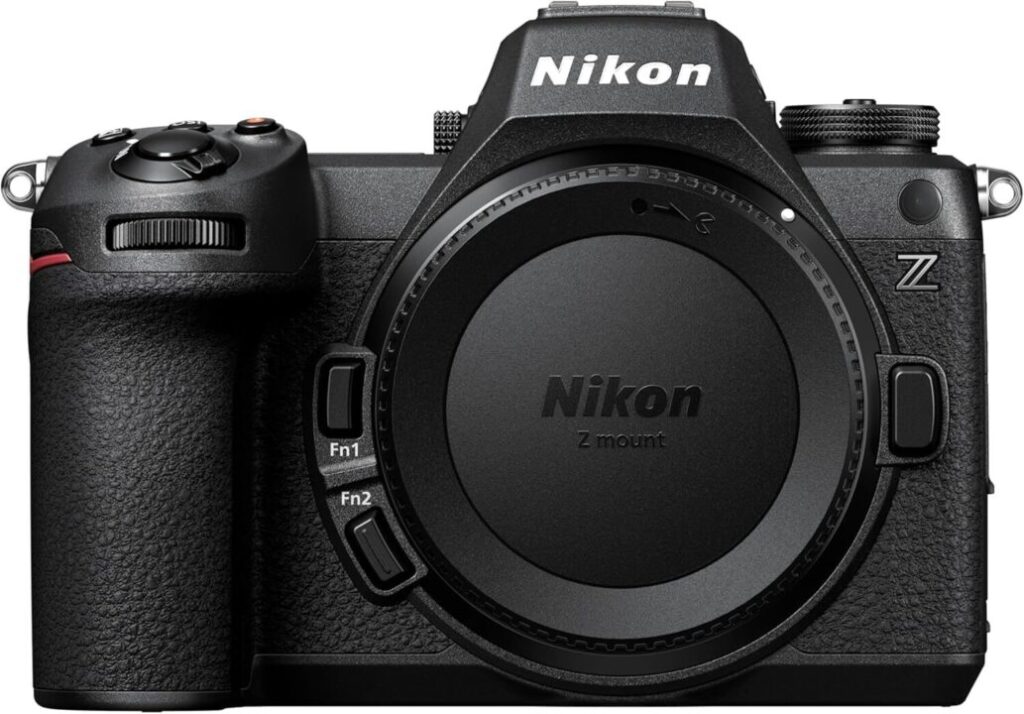
Key Features:
- 24.5MP Full-Frame Partially Stacked CMOS Sensor.
- Internal 6K 60p RAW video recording.
- 8-stop In-Body Image Stabilization.
- Advanced AI-powered Autofocus with 3D tracking and subject detection.
- High-resolution 5.76M-dot EVF with 4000-nit brightness.
The Nikon Z6 III stands out as a true hybrid powerhouse and a strong contender for the best professional mirrorless camera. Its innovative partially stacked full frame mirrorless sensor, incredible 6K internal RAW video, and class-leading 8-stop IBIS make it a dream for both photographers and videographers. This camera truly defines high-end interchangeable lens cameras.
“Choosing the right ILC isn’t just about megapixels; it’s about investing in a system that empowers your vision and adapts to your evolving creative journey.”
Technical Insight: Understanding Sensor Crop Factor
When discussing camera sensor size, particularly APS-C mirrorless versus full frame mirrorless, the concept of ‘crop factor’ is crucial for understanding how lenses behave. An APS-C sensor is physically smaller than a full-frame sensor, which means it ‘crops’ the image from the lens’s perspective. For example, a 50mm lens on an APS-C camera (with a typical 1.5x or 1.6x crop factor) will provide a field of view equivalent to a 75mm or 80mm lens on a full-frame camera.
Conclusion: Finding Your Perfect ILC Companion
The journey to find the best ILC camera is a personal one, influenced by your budget, photographic style, and creative aspirations. From the beginner-friendly Canon EOS R50 to the professional-grade Nikon Z6 III, the options available today are more powerful and versatile than ever before. Whether you prioritize camera megapixels, low light camera performance, or cutting-edge video features, there’s an interchangeable lens camera perfectly suited for you.
We hope these mirrorless camera recommendations and insights have provided you with the clarity needed to make an informed decision. Remember to consider not just the camera body, but also the entire lens ecosystem and your future photographic growth. Happy shooting!

With a degree in Electrical Engineering and years of hands-on experience in the tech industry, passionate to provide readers with insightful reviews. From smartphones and laptops to smart home devices and emerging technologies, he navigates the ever-evolving tech landscape, offering in-depth analyses and honest opinions.

